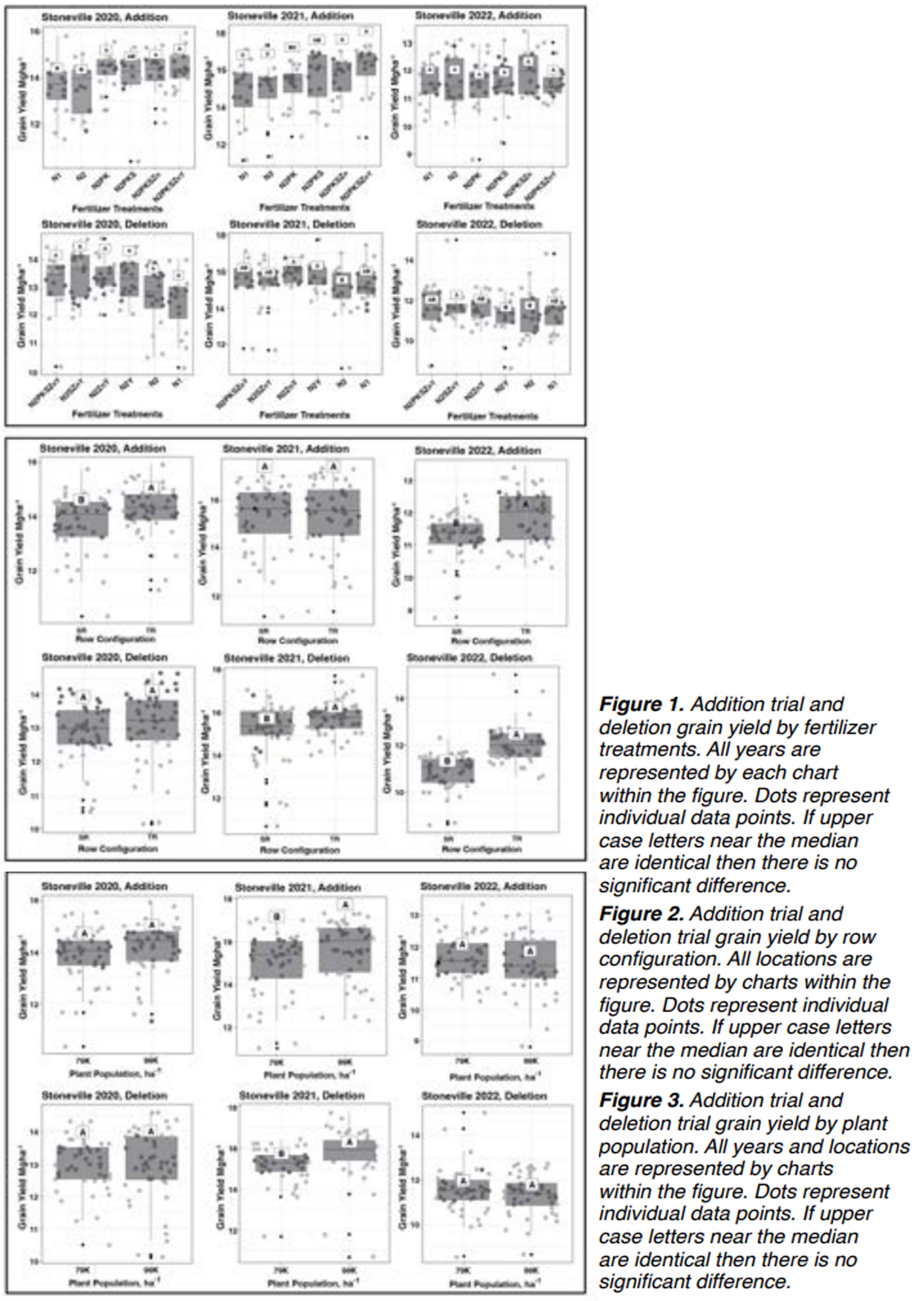Research Project
Stepwise Addition and Deletion of Fertilizer Inputs In a Corn Production System Under Irrigated and Dryland Conditions
Investigators: James Dew, Camden Oglesby, and Jagmandeep Dhillon
Date: 2022
Project Summary
Introduction
Corn remains one of the top three cereals produced internationally. Demand for corn has increased over the years and the crop currently supplies 50% of total world food calories. If a balanced management strategy or solution for corn production is not realized uncertainty in crop production worldwide may occur. The objective of this study was to determine which nutrient management strategy was best suited for optimizing yield.
Materials and Methods
Trials were conducted at the Delta Research and Extension Center (DREC), from 2020 to 2022. The trials incorporated production factors for evaluation including 1) plant population (32,000 seeds ac-1 versus 40,000 seeds ac-1) 2) row configuration (single vs twin row), and 3) six nutrient treatments. The six nutrient treatments were either incrementally added (Addition) or withheld (Deletion) separating two trials. Both trials were configured in a complete block design where fertilizer treatments were randomized and a full factorial between three factors resulted in a total of 24 treatments replicated four times. Poly pipe irrigation was utilized in Stoneville. Treatment means were estimated and separated at P ? 0.05.
Results and Discussion
Grain yield responses to the addition and deletion of six nutrient treatments significantly differed by year (Figure 1). Where in 2020 application of phosphorus (P) and potassium (K) along with higher rates of nitrogen (N2) resulted in the highest grain yield. Whereas, in 2021 application of zinc (Zn) when applied with N2, P, K, and sulfur (S) resulted in the highest recorded yield. Finally, in 2022 no differences were observed among nutrient and fungicide applications between the two trials.
Row configuration including a single row (SR) and twin row (TR) was the second factor investigated within this study. In both trials in 2020 and 2022, TR out yields SR, whereas, no significant differences among row configurations were noted in 2021.
Lastly, we tested grain yield in response to plant population, where two populations of 32,000 seed ac-1 (79K ha-1), and 40,000 seed ac-1 (99K ha-1) were tested. In both 2020 and 2022, no significant differences among plant populations were noted. Whereas, in 2021 99K out yield 79K in both addition and deletion trials.
Conclusion
Results from three year and two trials show that the response of grain yield to fertilizer amendments are highly variable. Producers should conduct soil testing before applying any fertilizers to their fields to prevent economic and environmental losses. Furthermore, this study found that twin rows and higher plant populations resulted in higher yields. However, future research should be conducted to investigate site-specific optimum plant populations for single vs. twin-row configurations.
Project Photos

- Topic:
- Irrigation scheduling
- Irrigation
Find Research
By Crop Type
By Topic
Contact NCAAR
General Information
Kaye Sullivan
vfs23@msstate.edu
662.390.8510
F:662.390.8501
Showcase Demo
Drew Gholson, Coordinator
drew.gholson@msstate.edu
662.390.8505
Himmy Lo
himmy.lo@msstate.edu
662.390.8509

